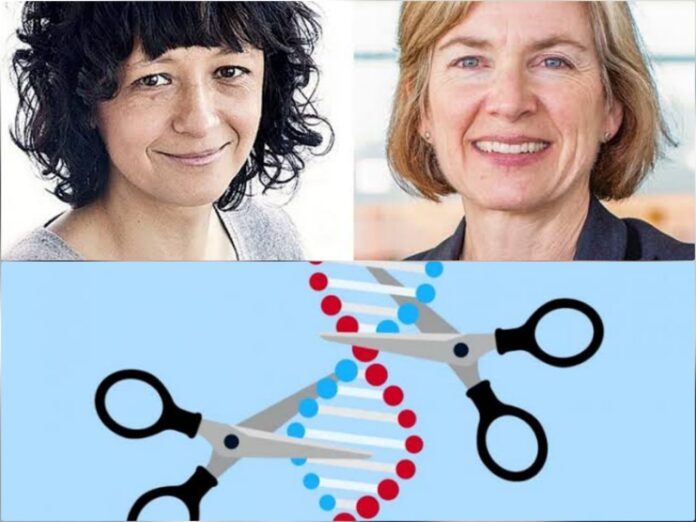It’s the Nobel prize season. Early this month, the Nobel prize for chemistry was announced and it is being hailed as historical because for the first time the award is shared by two women. According to the prize committee, American scientist, Jennifer Doudna, and French researcher Emmanuelle Charpentier were chosen “for the development of a method of genome editing” called CRISPER-Cas9 system. The two scientists are credited with the discovery of a method that makes the process of cutting the genes easier.
Gene Editing and CRISPR Cas9 technology
Genes are the basic unit of information through which genetic information is passed from one generation to another. They form proteins that perform various functions in our bodies. Since the 70s, developments in biotechnology have brought out several means to study genes through insertion, deletion, or mutating some genes. CRISPR- Cas9 is one such gene-editing tool that can cut a gene and make specific alterations in the genome.
CRISPR is an acronym for Clustered Regularly Interspaced Short Palindromic Repeats and Cas9 is the CRISPR-associated gene that comes from an ancient bacterial immune system. CRISPR sequences are quite well preserved in bacteria. When viruses infect a bacterium, they send their harmful DNA into it. If the bacteria survive the infection, it inserts part of viral DNA in its genome like a memory of the virus. The DNA is then used to protect bacteria from new infections.
Emmanuelle Charpentier was working on a bacterial defence mechanism and this chance discovery brought her to collaborate with Jennifer Doudna. They together found that bacteria use these sequences to cut the viral DNA in a very simple and precise manner, hence the name “genetic scissors”.
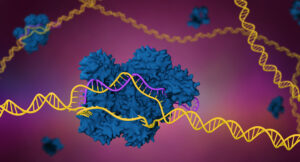
Within a years’ time, the research in CRISPR exploded. Doing genetic engineering was time-consuming and cumbersome, but with CISPR it is very easy to use, quick, and more specific. In just 8 years of time, it is used extensively in the study of genes, human disease models, and plant breeding.
In the words of the Nobel committee,
the method of CRISPR can also help in curing inherited life crippling diseases like sickle cell anemia, muscular dystrophy and Huntington’s disease. However, the technology needs further refinement before it can be tested on humans.
Ownership, Patent war, and Commercial applications
The story of ownership of CRISPR and who was the first is the stuff of TV series. From early 2012, there have been contesting claims from four groups about who did it first. Charpentier and Dudona were two of these four groups.
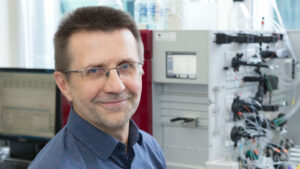
The overshadowed inventor from Lithuania, Virginijus Šikšnys, and his team were one of the researchers who independently showed how CRISPR worked and how it can be regulated. But his paper was rejected and Dudona paper that was submitted 2 months later was published in Science journal without much review fetching her celebrity status in the field.
It’s an open secret in academia that American scientists have easy access and credibility to the scientific publication houses compared to other countries and Šikšnys paper was from Lithuania which might be the reason for being rejected in the first place.
So, it’s not just the discovery; access and who gets reviewed and who doesn’t also play a huge role in the field of scientific discovery.
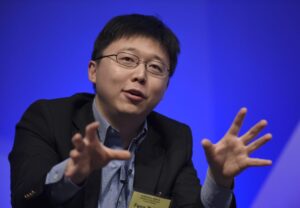
Feng Zhang, another American scientist was the first to successfully adapt CRISPR-Cas9 for gene editing beyond bacterial cells, the reason for the vast applications the method holds especially in terms of disease treatment. While the Dudona patent showed the general method, Zhang’s patent shows that it can be used in mammalian cells for the first time.
Since 2013, the group of Zhang and Dudona are tangled in a patent war over who gets the ownership rights of the intellectual property of the CIRSPR-Cas9 system because its applications are worth billions. So far, Zhang has the most patents and the patent battle is being fought out in court and has generated much chatter in the scientific community in the last 5 years.
Many say that this was also the reason CRISPR lost out on Nobel in 2015 and 2016 as the Nobel committee does not want controversy. Nonetheless, all four scientists have shared many a platforms and received several awards since 2014 separately and together, which goes to show the science is a collaborative effort. Now some have patents, some have companies worth billion-dollar investments and some have Nobel prizes also worth millions.
Charpentier and Dudona both have CRISPR based therapeutic companies. As of this 2020, there are at least 25 CRISPR based biotech companies with billion-dollar investments based on clinical and non-clinical aspects of the technology.
Misuse of technology and a Need for regulation
A very famous quote often attributed to Spiderman’s uncle Peter – With great power comes great responsibility. (Though the quote comes from Voltaire).
This could not be any truer than for science. From the atom bomb to the greatest medical inventions, there is always a fear of technology being misused. Human beings are always looking to advance themselves and be superhuman. The genetic scissors’ ability to add or delete parts of DNA has raised fears even among its inventors about the idea of genetically modified babies.
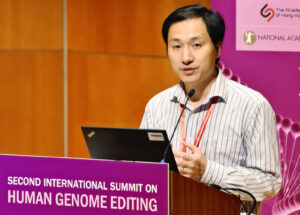
A Chinese researcher Hi Jiankui shocked the science world in 2018 when he announced that he used CRISPR to create gene-edited twins to confer them resistance to HIV. Another controversial part of his work was that he could not achieve those specific mutations and ended up making other unintended mutations. It’s not known how those mutations will play out in children’s lifetime. He was widely condemned, stripped of his position, and sentenced to 2 years of jail and a fine of 1 million yuan.
Many critics have also pointed out the applications of CRISPR in treating human diseases are exaggerated and the DNA damage it might cause is grossly underestimated. A 2018 article in Scientific American has cited several experiments where some of CRISPRed genes might lead to deleterious mutations causing tumors. Another publication found that CRISPR does accurate deletion but sets off a chain reaction of genes far away from the target that causes further DNA damage.
In the 2000s, Gene therapy was hailed as the next technology to cure cancer and many genetic diseases. In 2003, however, when a boy in a gene therapy trial in France developed leukemia because the repair gene landed in the wrong and activated a cancer-causing gene. Gene Therapy is defunct science now.
Yes, straight out of a Science fiction novel!
When there are massive commercial incentives and a chance to play God, the new technology does raise many ethical concerns. The point being technology like this is still evolving and we are still trying to understand the ways genes express and the unintended effects of mutations.
This does make one question the Nobel prize committee’s intentions of awarding a controversial method. There is a reason most Nobel prize winners are old white men, well, other than racism and sexism. The process of a discovery/invention takes not just years but decades of research to establish the far-reaching benefits or consequences of the award-winning research or technology. So, why did the Nobel prize committee jump on the bandwagon?
Most of the news around this year‘s Nobel prize in chemistry has been about it being historic and an inspiration for young women. Yes, it is indeed but it should not take the attention away from the danger of a technology that is still evolving.
As concerned citizens and ethical scientists, we should push for science that contributes to the larger good of all people and not only produces technology that can be used for only a select few, otherwise we will soon be looking at the Elysiums for the rich!
The writer is a scientist based in Bangalore.

















